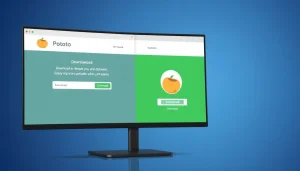Unlocking Accuracy: The Essential Guide to the AI Checker Tool
1. Understanding AI Checkers
1.1 What is an AI Checker?
An AI checker is a sophisticated tool designed to determine whether a piece of text has been generated by artificial intelligence (AI). With rapid advancements in AI technologies, content generation has become increasingly accessible, leading to a growing concern regarding the authenticity of written material. AI checkers utilize complex algorithms and machine learning strategies to analyze texts, comparing them against existing databases and language models to identify potential AI origins. These tools have gained prominence among students, educators, and professionals who value academic integrity and originality. For those looking for reliable detection methods, an ai checker proves essential in distinguishing between human and AI-generated content.
1.2 How AI Checkers Work
The operational framework of an AI checker typically involves multiple intricate steps. Primarily, it analyzes the syntax, style, and semantic structures of a text. By comparing these parameters against a specific set of linguistic models, the checker can discern patterns typical of human writing versus those indicative of AI generation.
Key techniques employed in the detection process include:
- Natural Language Processing (NLP): This technology allows the AI checker to understand and interpret human-like language patterns, identifying distinguishing features of human writing.
- Machine Learning Algorithms: These algorithms continuously learn and adapt from new datasets to enhance their detection capabilities, improving accuracy over time.
- Statistical Analysis: By measuring variances in word choice, sentence structure, and overall coherence, the checker makes informed predictions about the origin of the text.
1.3 Benefits of Using AI Checkers
The utility of AI checkers extends across various contexts, each revealing unique advantages. Some of the primary benefits include:
- Academic Integrity: Educational institutions can uphold standards of originality by utilizing AI checkers to detect potential plagiarism or uncredited AI assistance.
- Content Quality Assurance: Professionals relying on high-quality written materials can use these tools to verify the authenticity of their content before publication.
- Streamlined Editing Process: AI checkers assist content creators in identifying areas that may need human refinement, ensuring the text maintains a natural flow and engaging tone.
2. Comparing Top AI Checker Tools
2.1 Features to Look For
When evaluating AI checker tools, several key features should influence your decision:
- Accuracy: The primary metric of a successful AI checker is its accuracy in detecting AI-generated texts, often measured against known datasets.
- User Experience: An intuitive interface and seamless workflow are essential for ensuring that users can efficiently check texts without technical difficulties.
- Comprehensive Reporting: Effective AI checkers provide detailed analysis reports that outline the reasoning behind their evaluations, which can help users understand the findings better.
- Integration Capability: Tools that can be integrated into existing content management systems or editing software can streamline processes for professional content creators.
2.2 Leading AI Checker Platforms
There are numerous AI checker platforms available, each offering unique features and benefits. Some of the recommended ones are:
- ZeroGPT: Renowned for its accurate text analysis, it utilizes a multi-stage methodology to assess the origin of text seamlessly.
- QuillBot: This platform includes a user-friendly interface and supports various AI writing applications, making it ideal for versatile checks.
- Grammarly: Beyond grammar and style correction, Grammarly’s AI detector identifies AI-generated content effectively, becoming a reliable choice for everyday use.
- GPTZero: Featured in numerous media outlets, GPTZero is known for its ability to detect AI-generated content reliably across various platforms.
2.3 Pricing Models of AI Checkers
Understanding the pricing structure of different AI checkers is vital for budgeting and ensuring value for investment. Common models include:
- Free Access: Many platforms offer fundamental features free of charge, allowing users to test their capabilities before making a commitment.
- Subscription-Based: Some advanced tools require a monthly or annual subscription for full access to premium features, including deeper analysis and expanded character limits.
- Pay-Per-Use: This model allows users to pay each time they use the service, which can be cost-effective for those who check content sparingly.
3. Best Practices for Effective Use of AI Checkers
3.1 Preparing Text for AI Checking
To get the most out of AI checkers, proper formatting and preparation of the text are essential. Here are several key tips:
- Clear Formatting: Ensure that the text is free from unnecessary formatting that might confuse the checker, such as excessive use of special characters.
- Consistent Language Usage: Maintain a consistent style and tone throughout the document to enhance the checker’s ability to evaluate its coherence.
- Shorter Segments: Break lengthy texts into smaller segments. This allows for more accurate analysis and can help pinpoint specific areas of concern.
3.2 Interpreting AI Checker Results
Understanding the output from AI checkers is crucial for effective implementation. Here’s how to navigate the results:
- Threshold Awareness: Familiarize yourself with the threshold score that indicates whether content is AI-generated or genuine. Different tools may employ varying scales.
- Review Reports Thoroughly: Examine the detailed reports provided by the checker for contextual information and specific areas of concern. This can guide necessary revisions.
- Seek Expert Opinion: If uncertain about the results, consulting an expert in linguistics or writing can provide clarity and actionable suggestions.
3.3 Avoiding Common Misconceptions
While AI checkers are invaluable, it is essential to dispel certain misconceptions that may cloud understanding:
- AI Checkers Are Absolute: It’s crucial to remember AI detectors are not infallible. They provide insights but should not replace human judgment.
- Misinterpretation of Results: Scores do not always definitively indicate AI involvement; context matters significantly. Consider additional factors that might influence these outcomes.
- Overreliance on Technology: While helpful, users should maintain their critical thinking skills, using AI checkers as an aid rather than the sole tool for quality assurance.
4. Case Studies: Successful Applications of AI Checkers
4.1 Academic Integrity and AI Detection
In educational institutions, AI checkers play a pivotal role in maintaining academic integrity. Case studies show how schools have integrated these tools into their assessment processes:
For example, a university implemented an AI checker as part of its submission requirements for essays. Students received immediate feedback and tailored guidance on areas to improve, ultimately reducing instances of plagiarism and enhancing learning outcomes.
4.2 Business Applications of AI Checkers
In the corporate world, content creation is often integral to branding and communication. AI checkers help businesses ensure their marketing materials reflect authentic and quality messaging. Consider a marketing agency that employed an AI checker across its copywriting team. By consistently ensuring the authenticity of their copy before publication, they bolstered their reputation and garnered trust from clients.
4.3 Enhancing Content Quality with AI Tools
Furthermore, incorporating AI-checking tools within content strategies helps enhance overall quality. For instance, a popular publishing platform utilized an AI checker to analyze contributed articles, allowing editors to request revisions based on the reports generated. This practice not only improved the quality of submissions but also educated authors on effective writing techniques.
5. The Future of AI Checkers
5.1 Advancements in AI Detection Technology
The future of AI checkers is poised for continual advancement, integrating cutting-edge technologies that enhance efficiency and accuracy. As machine learning evolves, we can expect improvements in the detection algorithms, allowing for more nuanced analysis of language structures, even in hybrid writing scenarios where human and AI contributions coexist.
5.2 Ethical Considerations and AI
As AI checkers become essential tools, ethical considerations surrounding their use will rise in importance. This involves discussions on the balance between maintaining academic integrity and fostering creativity in writing. Schools and organizations will need to navigate these issues delicately to ensure that they promote ethical practices without stifling innovation.
5.3 Preparing for Emerging AI Trends
Finally, as AI trends continue to emerge, staying informed about the latest capabilities and challenges will be vital for users of AI checkers. Whether addressing advancements in generative AI or adapting to new ethical challenges, being proactive will enable users to harness AI checkers’ full potential while navigating the complexities of evolving technologies.














Post Comment